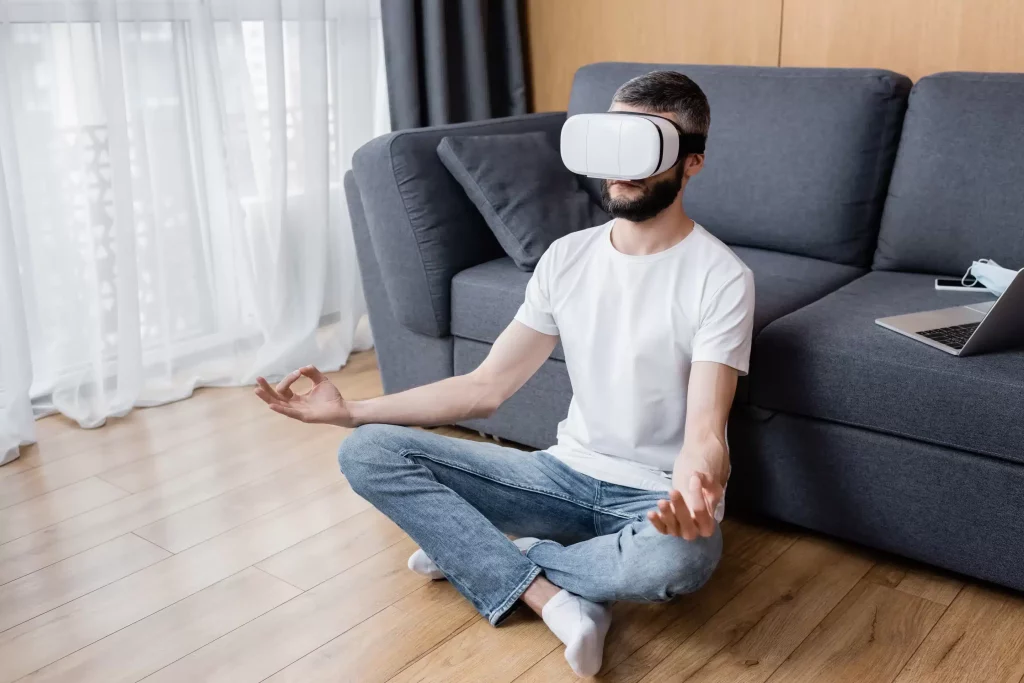Introduction: The Evolution of Mood Rings Into Smart Wearables
Mood rings first captured popular imagination in the 1970s as novelty jewelry that purported to reflect a wearer’s emotional state through color changes caused by temperature-sensitive materials. Fast forward to the digital age, and this concept has been dramatically transformed by advances in wearable technology and biosensing. Today’s wearable mood rings are sophisticated devices capable of measuring physiological indicators such as skin temperature and electrodermal activity (EDA), offering real-time insights into emotional states. These smart wearables are revolutionizing self-regulation by providing personalized feedback and integrating Cognitive Behavioral Therapy (CBT)-based behavioral nudges. This article explores the science and technology behind wearable mood rings, their role in emotional self-regulation, and their potential to reshape mental wellness practices.
The Science Behind Wearable Mood Rings: Sensors and Biometrics
Modern wearable mood rings rely on non-invasive sensors that track subtle physiological changes linked to emotional arousal. Two primary metrics are skin temperature and electrodermal response. Skin temperature fluctuates with changes in blood flow, which can be influenced by stress, anxiety, or relaxation. Electrodermal activity, sometimes called galvanic skin response, measures changes in the skin’s electrical conductance caused by sweat gland activity, a reliable indicator of sympathetic nervous system activation.
Together, these measurements provide a window into the wearer’s autonomic nervous system, reflecting shifts in emotional and physiological states. Unlike traditional mood rings that react passively to temperature, smart wearables analyze these data points continuously, producing real-time mood assessments with greater precision.
From Data to Insight: Interpreting Emotional States
The raw biometric data collected by wearable mood rings are processed by embedded algorithms that interpret physiological signals to estimate emotional states such as calmness, stress, or excitement. Machine learning techniques improve accuracy by recognizing individual baseline variations and contextual factors such as activity level or environmental temperature.
This personalized calibration is crucial because emotional responses vary widely between individuals. The device’s feedback can be displayed via subtle color changes on the ring itself, companion smartphone apps, or haptic alerts, helping users become more aware of their emotional fluctuations throughout the day.
CBT-Based Behavioral Nudges: Enhancing Self-Regulation
One of the most transformative aspects of wearable mood rings is their integration with Cognitive Behavioral Therapy principles. CBT emphasizes the identification and modification of maladaptive thoughts and behaviors to improve emotional well-being. Wearable mood rings can deliver timely behavioral nudges based on detected emotional states, guiding users toward healthier coping strategies.
For example, when the device senses heightened stress through elevated EDA and skin temperature changes, it might prompt the wearer to engage in breathing exercises, mindfulness meditation, or cognitive reframing techniques—all common CBT tools. These nudges, delivered through app notifications or vibration patterns, act as real-time interventions, empowering users to manage emotions proactively before stress escalates.
The Impact on Emotional Awareness and Mindfulness
Self-awareness is a foundational step in emotional regulation, yet many individuals struggle to identify subtle changes in their mood until emotions become overwhelming. Wearable mood rings address this challenge by providing continuous, objective feedback, helping users develop a deeper, moment-to-moment understanding of their emotional landscape.
This enhanced emotional awareness dovetails with mindfulness practices, which encourage nonjudgmental observation of internal experiences. By making invisible physiological signals visible and interpretable, wearable mood rings cultivate mindfulness in daily life, supporting sustained mental health benefits.

Behavioral and Clinical Applications: From Wellness to Therapy
Beyond personal use, wearable mood rings hold promise in clinical and behavioral health settings. Mental health professionals can incorporate these devices into therapy plans to monitor clients’ emotional states between sessions, allowing for more tailored interventions. The data collected also enable the tracking of treatment progress and identification of triggers or patterns that might otherwise go unnoticed.
In wellness contexts, these wearables encourage preventive care by helping users recognize early signs of stress or mood dysregulation, promoting timely self-care and reducing the likelihood of burnout or emotional crises. Companies and organizations have begun adopting mood rings as part of employee wellness programs to enhance workplace mental health and productivity.
Challenges and Limitations
While promising, wearable mood rings face several challenges. Accurate interpretation of physiological data remains complex due to confounding factors such as physical activity, ambient temperature, and individual variability. False positives or negatives in mood detection could lead to frustration or mistrust.
Privacy concerns also arise as sensitive emotional data are collected and potentially shared through apps or cloud services. Ensuring robust data security and transparency about data use is essential to gain and maintain user trust.
Moreover, behavioral nudges must be carefully designed to avoid creating dependency or anxiety over constant monitoring. Ethical considerations around consent and psychological impact are paramount.
Future Innovations and Integration
The future of wearable mood rings is likely to involve greater integration with other health technologies and artificial intelligence. Multi-sensor devices combining heart rate variability, respiration, and movement data will refine emotional state detection. AI-powered virtual coaches could offer personalized, adaptive mental health support, bridging gaps between technology and human care.
Advances in materials science might also make mood rings more stylish, durable, and sensitive, increasing user adoption. Integration with smart home systems could enable environmental adjustments—such as lighting or soundscapes—in response to detected mood states, creating immersive emotional wellness ecosystems.
Conclusion: Empowering Emotional Self-Regulation Through Wearable Technology
Wearable mood rings represent a compelling fusion of biotechnology, psychology, and digital innovation. By harnessing biometric data like skin temperature and electrodermal response, these devices provide unprecedented real-time insights into emotional states. Coupled with CBT-based behavioral nudges, they offer practical tools for enhancing self-regulation, emotional awareness, and mental resilience.
As these technologies mature, they hold the potential to transform personal and clinical approaches to emotional wellness, making self-regulation more accessible, engaging, and effective. While challenges remain, the rise of wearable mood rings signals a promising future where technology empowers individuals to better understand and manage their inner emotional worlds.































